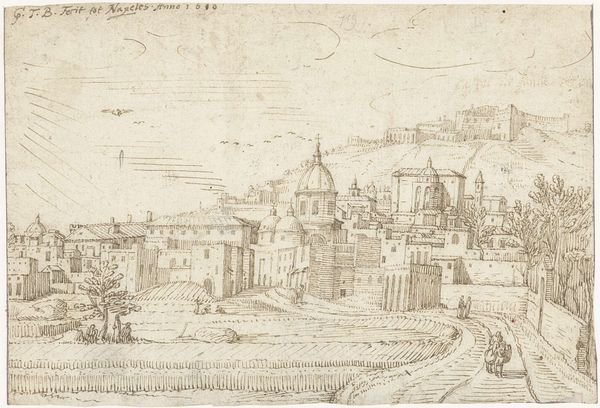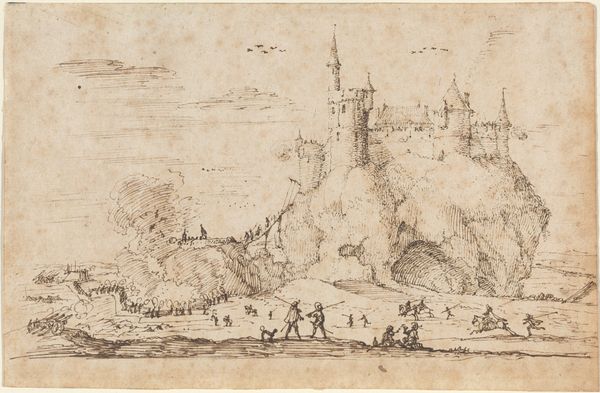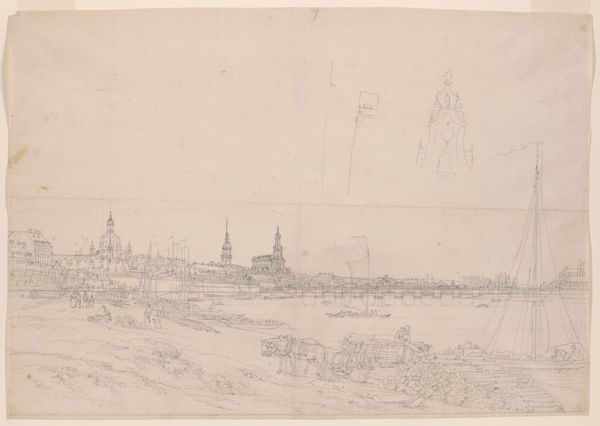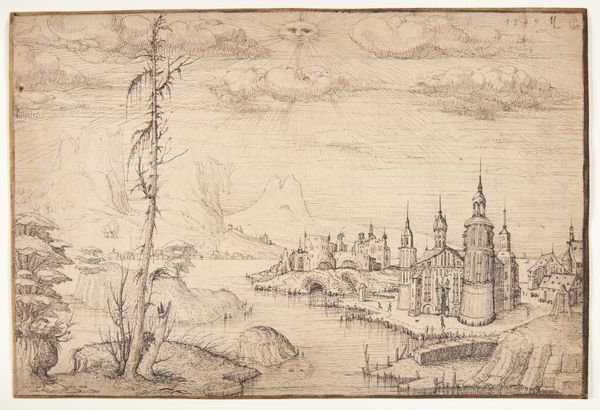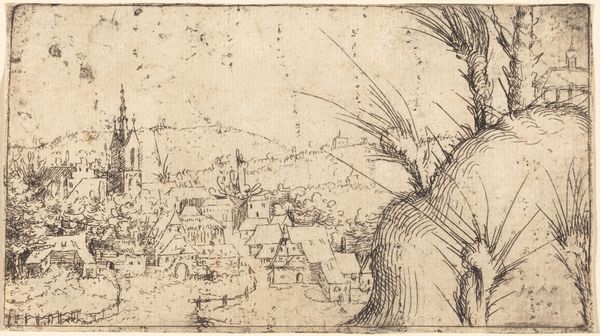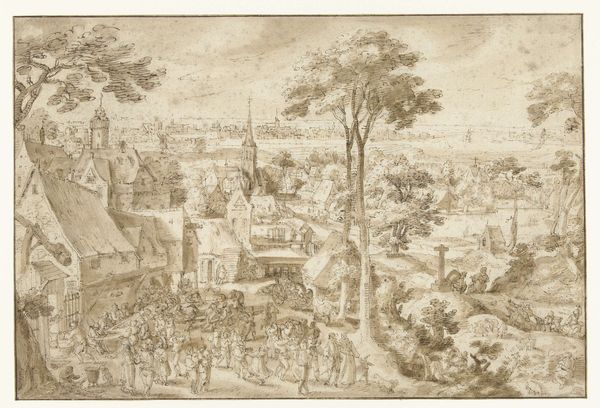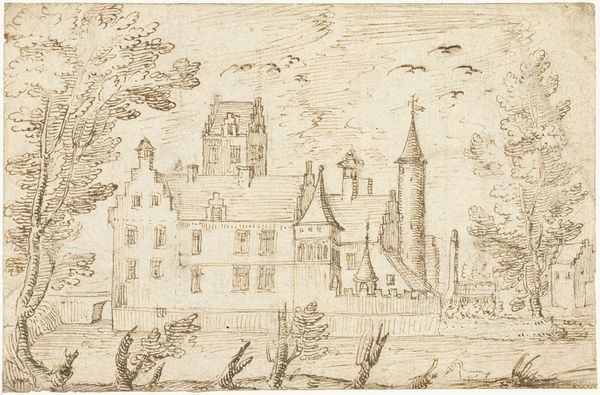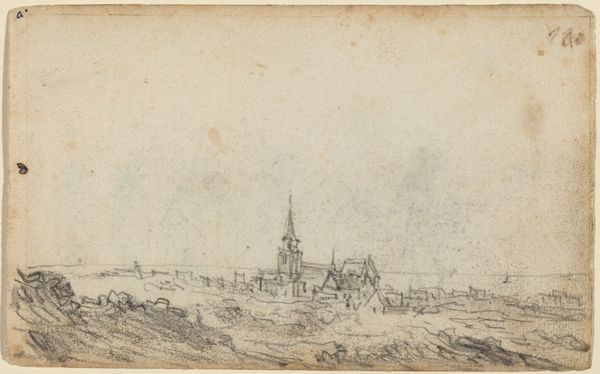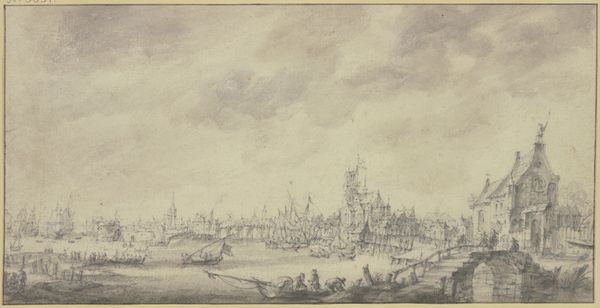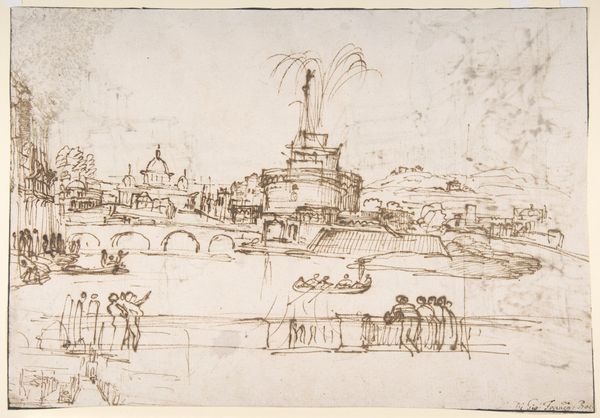
drawing, pencil
#
drawing
#
dutch-golden-age
#
pencil sketch
#
landscape
#
etching
#
pencil
#
cityscape
Dimensions: height 203 mm, width 400 mm
Copyright: Rijks Museum: Open Domain
Jan Brueghel the Younger created this drawing of Delft with pen and brown ink on paper in the 17th century. The immediacy of drawing often allows artists to capture scenes as they are, bearing witness to the world around them. In this detailed cityscape, the ink's fluidity allows Brueghel to render the scene's architectural complexity and the town's bustling activity. Note how the pen strokes vary in thickness and density, creating depth and texture. The artist's hand moves quickly to capture the likeness of the buildings, windmills, and boats. The ink, acting as a swift messenger, translates the artist's observations onto the paper. In this period, the Dutch Golden Age, Delft was a thriving center of trade and art. Drawings like this served not only as records of the city's appearance, but also as testaments to its economic vitality. The choice of a humble medium like ink and paper underscores the value of observation and the importance of capturing everyday life, challenging the hierarchy between fine art and craft.
Comments
No comments
Be the first to comment and join the conversation on the ultimate creative platform.


